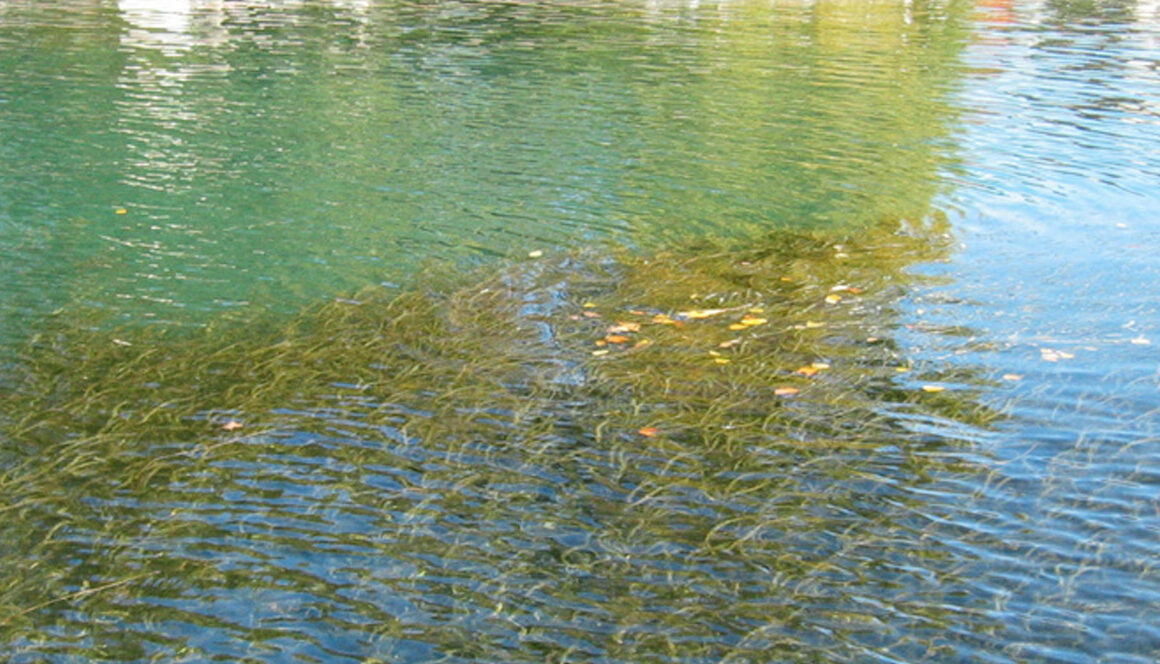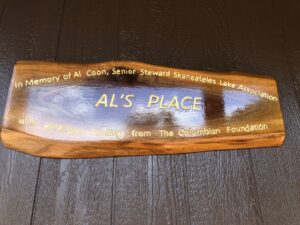First Responders Quick Responders Fran Rotunno Fish
The response time of first responders can make a huge difference in the quality of the outcome. We all know that from our own experiences or the experiences of family members or friends.
The Skaneateles Lake Association has long been a first responder for threats to Skaneateles Lake. I will not go into a prolonged history but our responses to the threat of milfoil and harmful algal blooms (HABs) stand out. Indeed, we have been the only responders to the threat of milfoil and continue to respond to it. The lake wide harmful algal bloom of 2017 was confirmed from samples obtained first by SLA volunteer board members in response to a call of concern from an SLA member. That sample, turned over to the Syracuse City Water Department was the keystone to the diagnosis and response to what became a lake wide HAB.
One of the most positive elements of a volunteer not for profit agency like the SLA is the ability to respond fairly quickly to the need for fulfilling its mission whether it involves initiating a new program, expanding an existing one or altering a schedule based upon the need for such.
The latter is exactly what the SLA did in regard to our Invasive Species Monitoring Steward Program early in April. While we usually staff major launch sites with our Stewards toward the middle or end of May, our Board Member, Buzz Roberts, noted excessive traffic at the DEC Launch site in April Due to the abundance of Wall Eye that had been introduced into the lake (that should not have happened) and were threatening the normal Skaneateles Lake fish population, the DEC took the limits off of the permitted Wall Eye fish catch. The word got out, spread on social media and in early April, the DEC launch was filled with boats and trailers from near and far and some were clearly coming to launch that were carrying hitchhiking vegetation with them. Seeing this, Buzz Roberts made the indicated schedule adjustment and the SLA quickly put the Steward Program into action to help reduce the risk of all those from near and far who were responding to the no catch Wall Eye limit from bringing invasives to Skaneateles Lake. Our Stewards educated those who came about the NYS regulations for boats and trailers to be clean, drained and dry and assisted boaters to remove vegetation before launching
Responding quickly is so important to the outcome of the efforts of a first responder and, as a first responder for the Lake, that is exactly what the SLA did. That type of timely adjustment of program in response to its mission is the hallmark of an effective not for profit. The SLA’s mission driven efforts are only possible with the generous support of the community it serves.
Please thank the following SLA members whose sponsorship of an Invasive Species Monitoring Steward and support of the David Lee Hardy Fund in 2020 and/or 2021 enabled us to fund this important program in the past and please consider joining as a member and a support of this program in 2022: Nancy Marquardt, Paul & Karen Black, Clarice Begemann , Richard & Barbara Evans,, Skaneateles Garden Club, Nicholas & Cynthia Signorelli, The Kelly Family, Dennis & Ashley Longwell, Robert and Christine Pierce, Scott & Suzanne McClurg, Bob & Betsey Legg Madden, Eileen Murphy, Ann Hinchcliff, Kyle & Liz Gebhardt, Chris Johnson & Jean Shook, Ed & Deborah Brennan, George Kenien & Mary Ellen Faughnan, Shadow Lawn Lake Association, John & Sharon Paddock, Mary Knepper & Susan Mark, Nick & Kate Hardy, Pine Bluff HOA, Dan & Jill Lang, Nicole Way, Liz Liddy, Mary Gardner, Mary Bradly, Judd Seales, Chris & Caitlin Fields, Dave & Paula Miller, L & C Winkelman, Joseph & Katherine Compagni, John Macallister & Laurel Moranz, Patrick Doyle & Elizabeth Downs, Walter & Kathleen Sullivan, Jason & Catherine Armijo, John & Maureen Barringer, Adam Gasurowski & Claudia Kosty, The Jermy Family, Robert & Ann McKenty, Joseph & Alicia Salibra, Eloise Luchsinger, David & Ann Lee, Karen Strods, Dickman Farms, Greenhouse & Gardens, Mary Sennett, F J Estlinbaum Barge & Crane, Christophe & Carrie Scholtz, Jack & Patty Reed, Angelo & Margaret Scopelianos, Jim & Patty Hertz, Janice Hardy, Dan & Kathleen Mezzalingua, Chad & Kathleen Rogers and multiple anonymous donors
Source: Skaneateles Press Observer 6/8/2022


 Fran Rotunno Fish
Fran Rotunno Fish